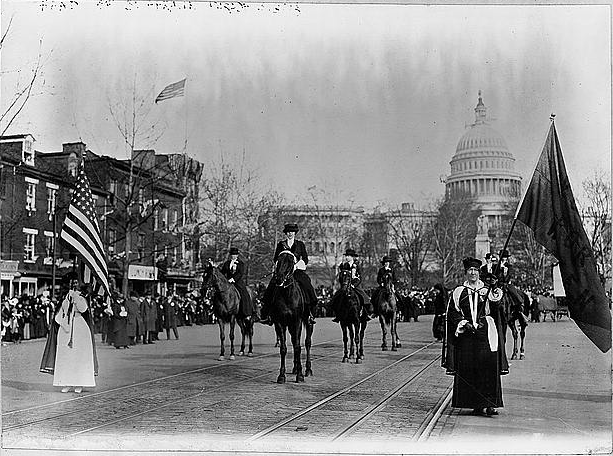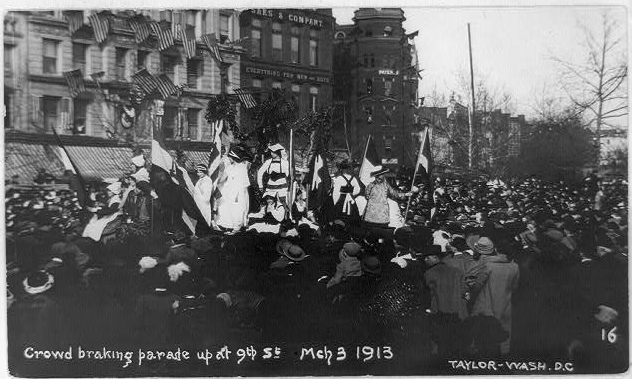“Thousands of women gathered in Washington, D.C. to call for a constitutional amendment guaranteeing women the right to vote. While women had been fighting hard for suffrage for over 60 years, this marked the first major national event for the movement.
The huge parade, which was spearheaded by Alice Paul and the National American Woman Suffrage Association, was held on March 3, 1913. Riding atop a white horse, lawyer and activist Inez Milholland led over five thousand suffragettes up Pennsylvania Avenue, along with over 20 parade floats, nine bands, and four mounted brigades.

Women suffragists marching on Pennsylvania Avenue led by Mrs. Richard Coke Burleson (center on horseback); U.S. Capitol in background. (Library of Congress
The organizers of the parade also maximized attention on the event by strategically hosting it just one day before the inauguration of President-elect Woodrow Wilson. This tactic worked. As the women marched from the U.S. Capitol toward the Treasury Building, they were met by thousands of spectators, many in town for the inauguration.
Not all spectators were kind. Some marchers were jostled, tripped, and violently attacked, while police on the parade route did little to help. By the end of the day, over 100 women had to be hospitalized for injuries. However, the women did not give up; they finished the parade. Their experiences led to major news stories and even congressional hearings. Historians later credited the 1913 parade for giving the suffrage movement a new wave of inspiration and purpose.

While it took another seven years for the Nineteenth Amendment to be ratified on August 18, 1920, the women who marched on this day in history accomplished their goal of reinvigorating the suffrage movement. As the official parade pamphlet read, they gave “expression to the nation-wide demand for an amendment to the United States Constitution enfranchising women.” Alice Paul, Inez Milholland, and the others who marched in 1913 are just some of the women who made a more just and prosperous future possible for all Americans.” [credit]